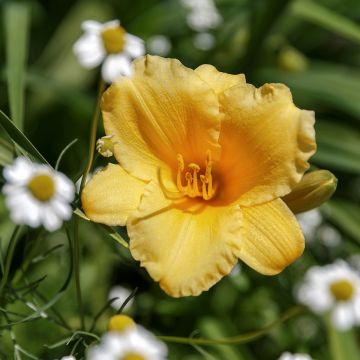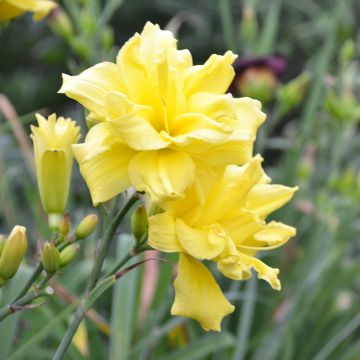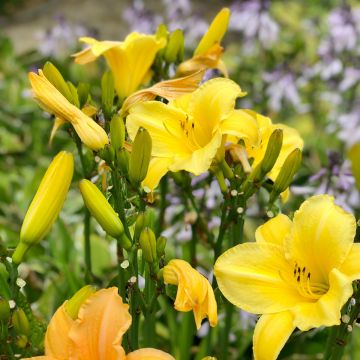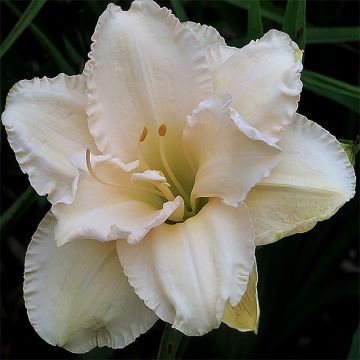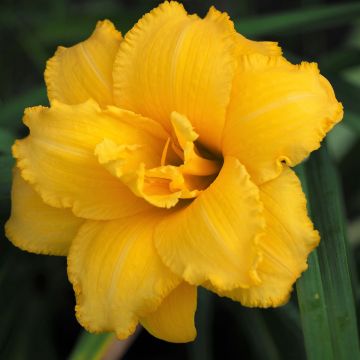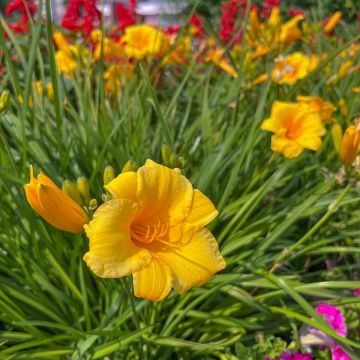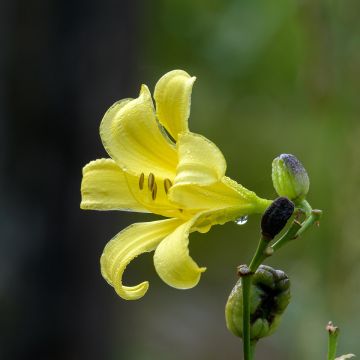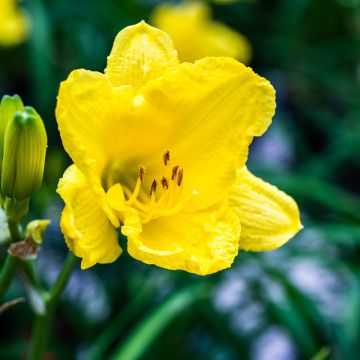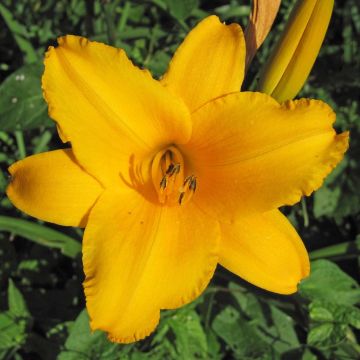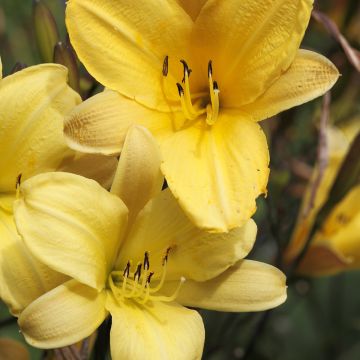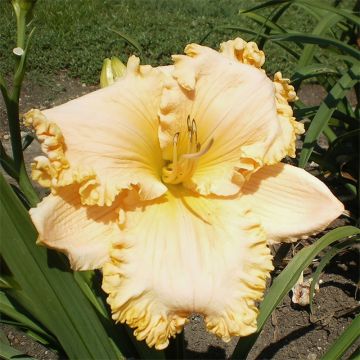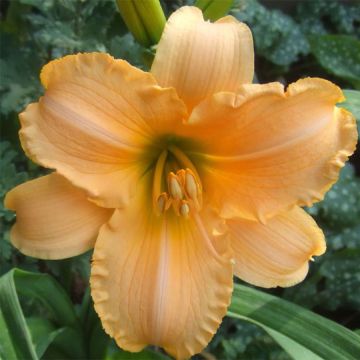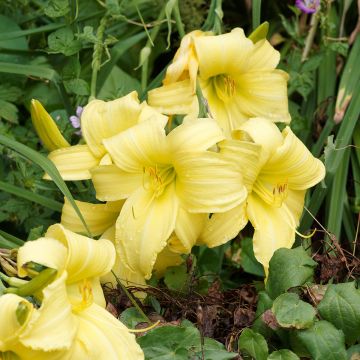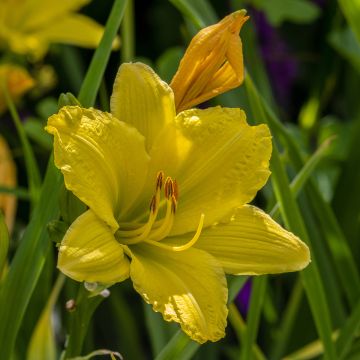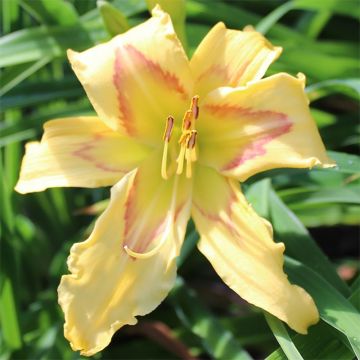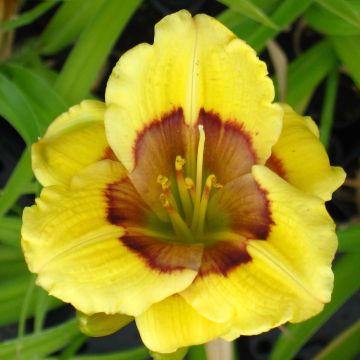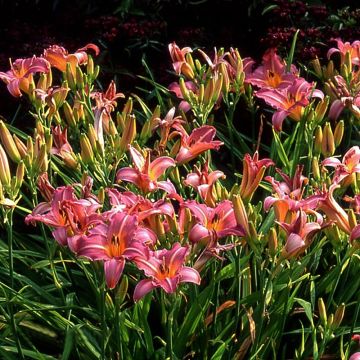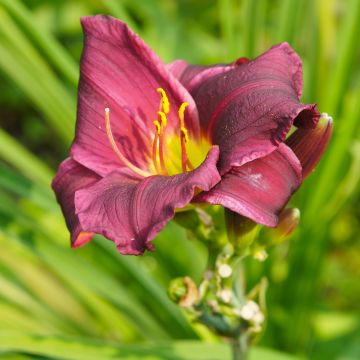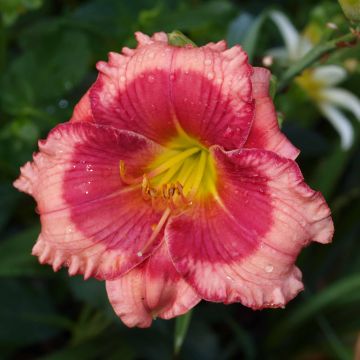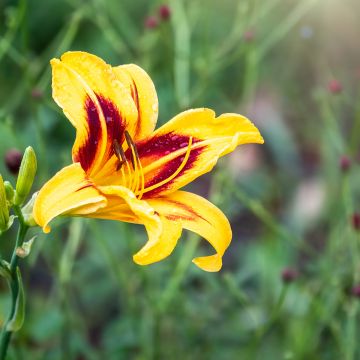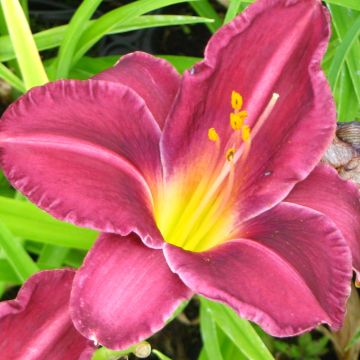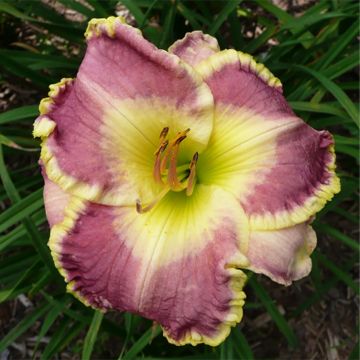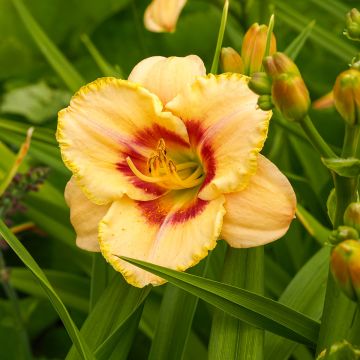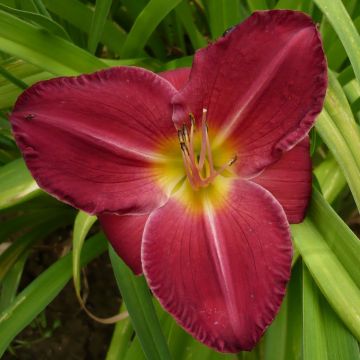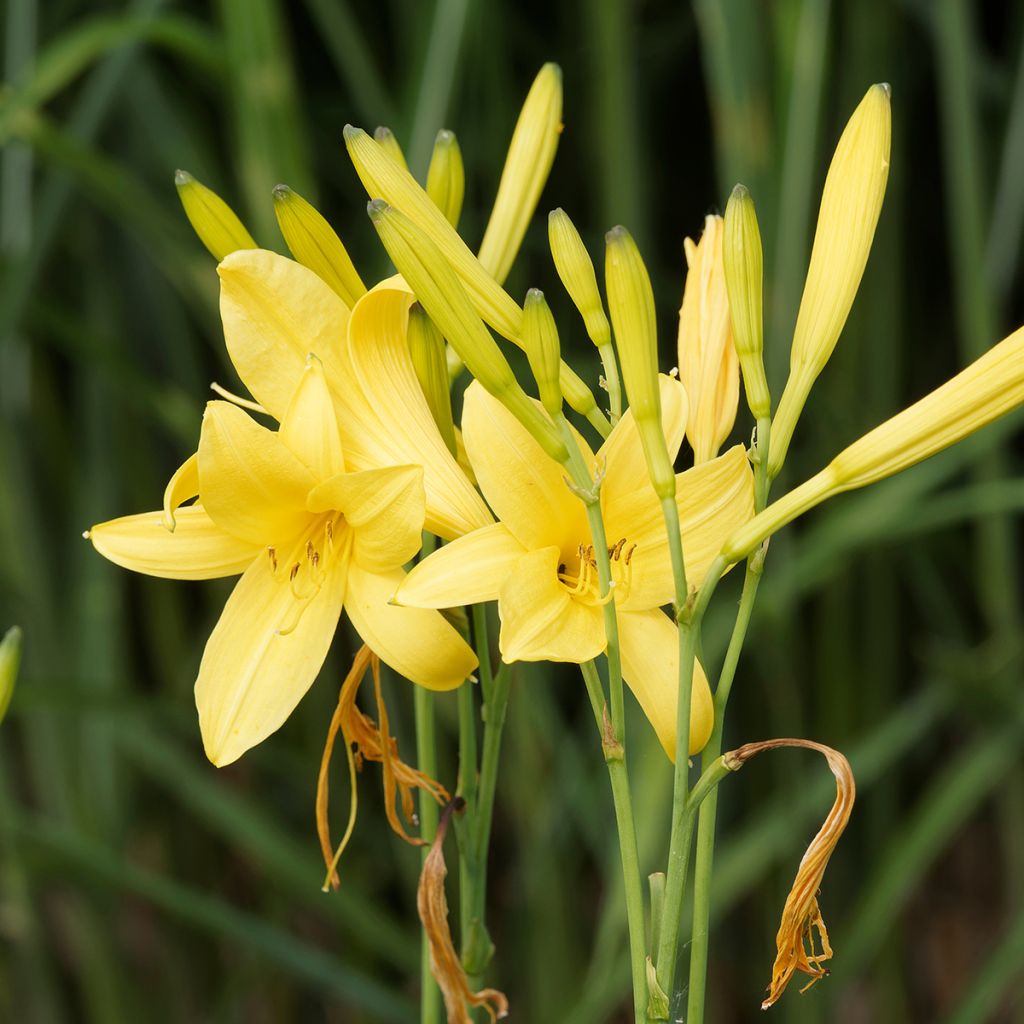

Hemerocallis lilioasphodelus - Daylily
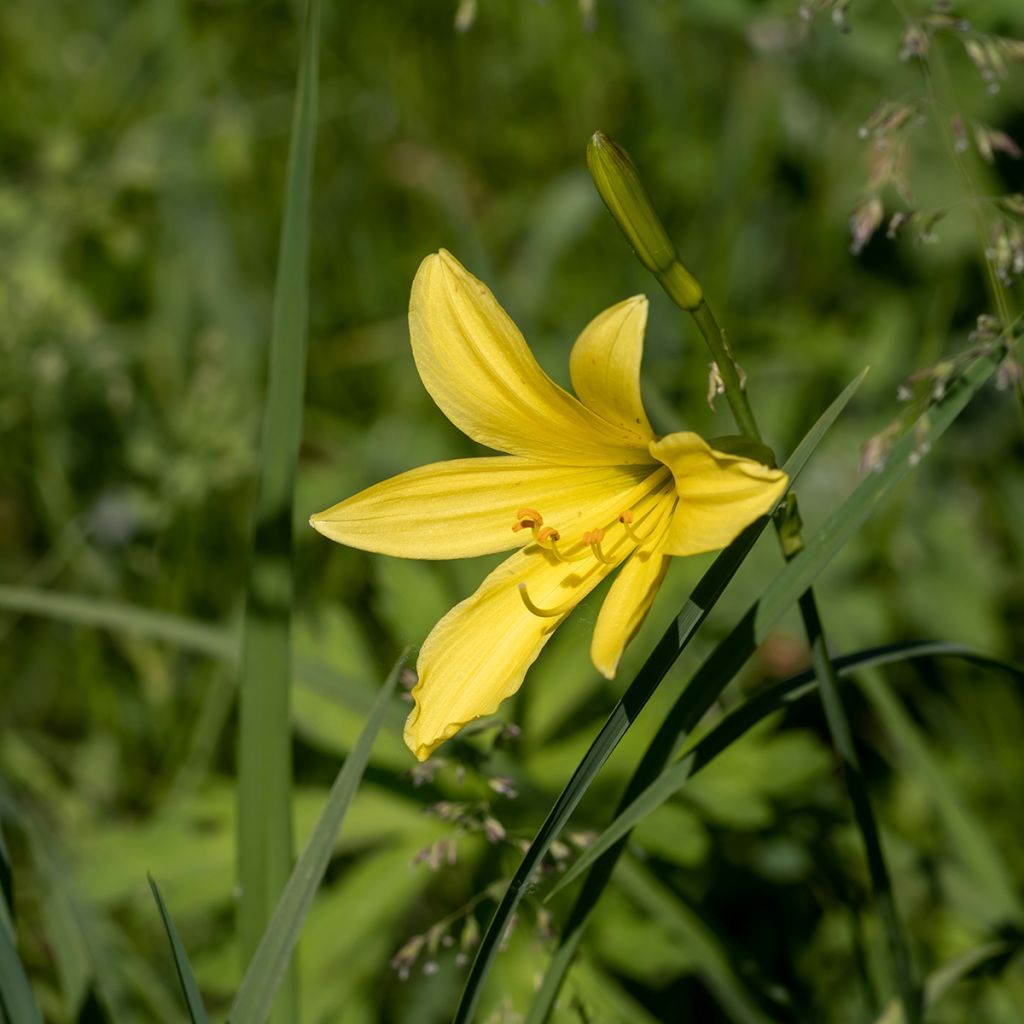

Hemerocallis lilioasphodelus - Daylily
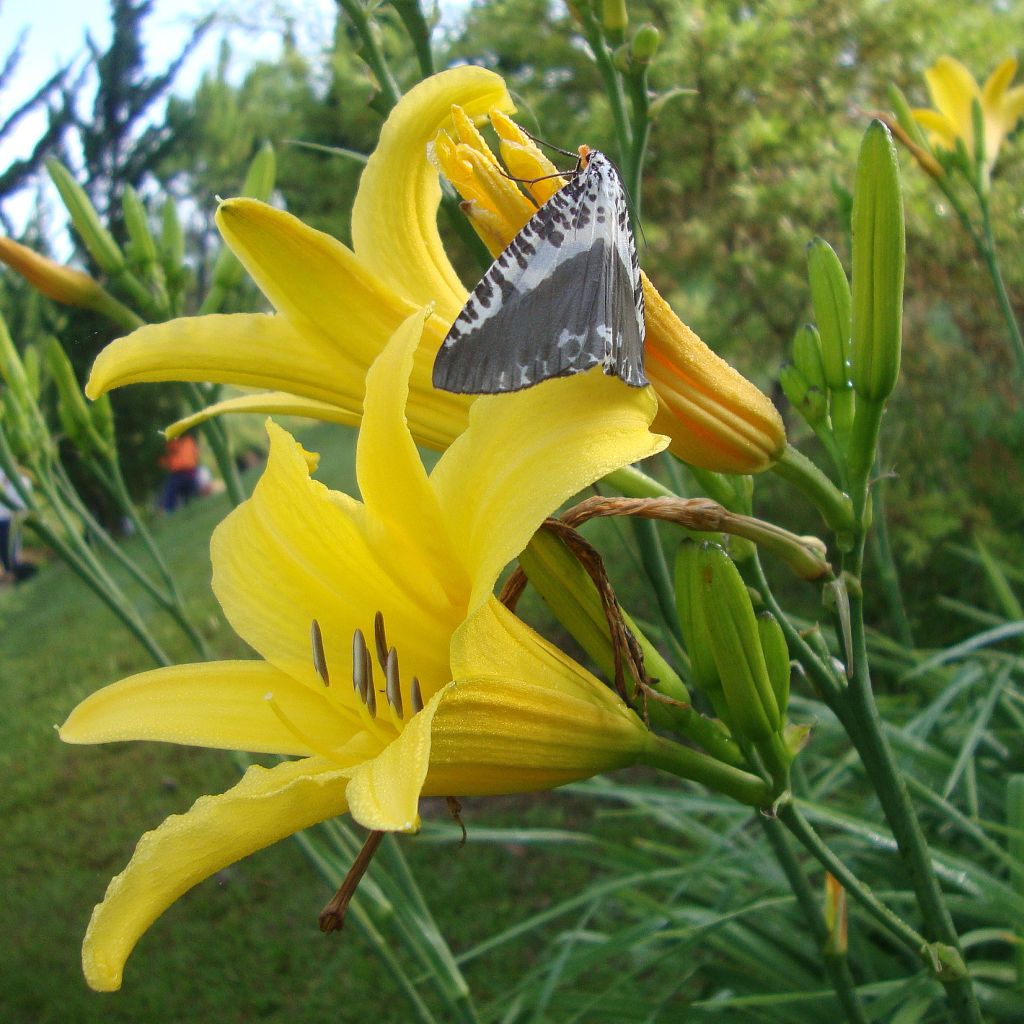

Hemerocallis lilioasphodelus - Daylily
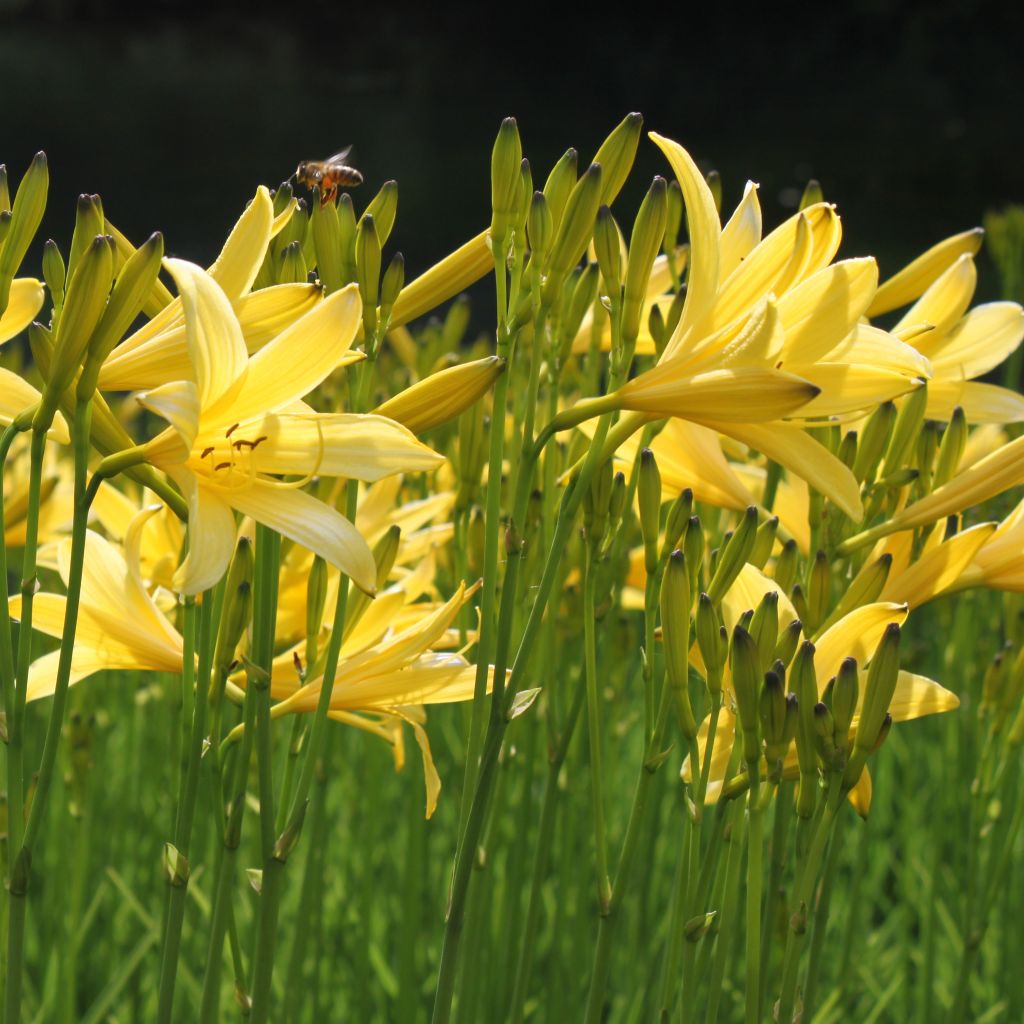

Hemerocallis lilioasphodelus - Daylily
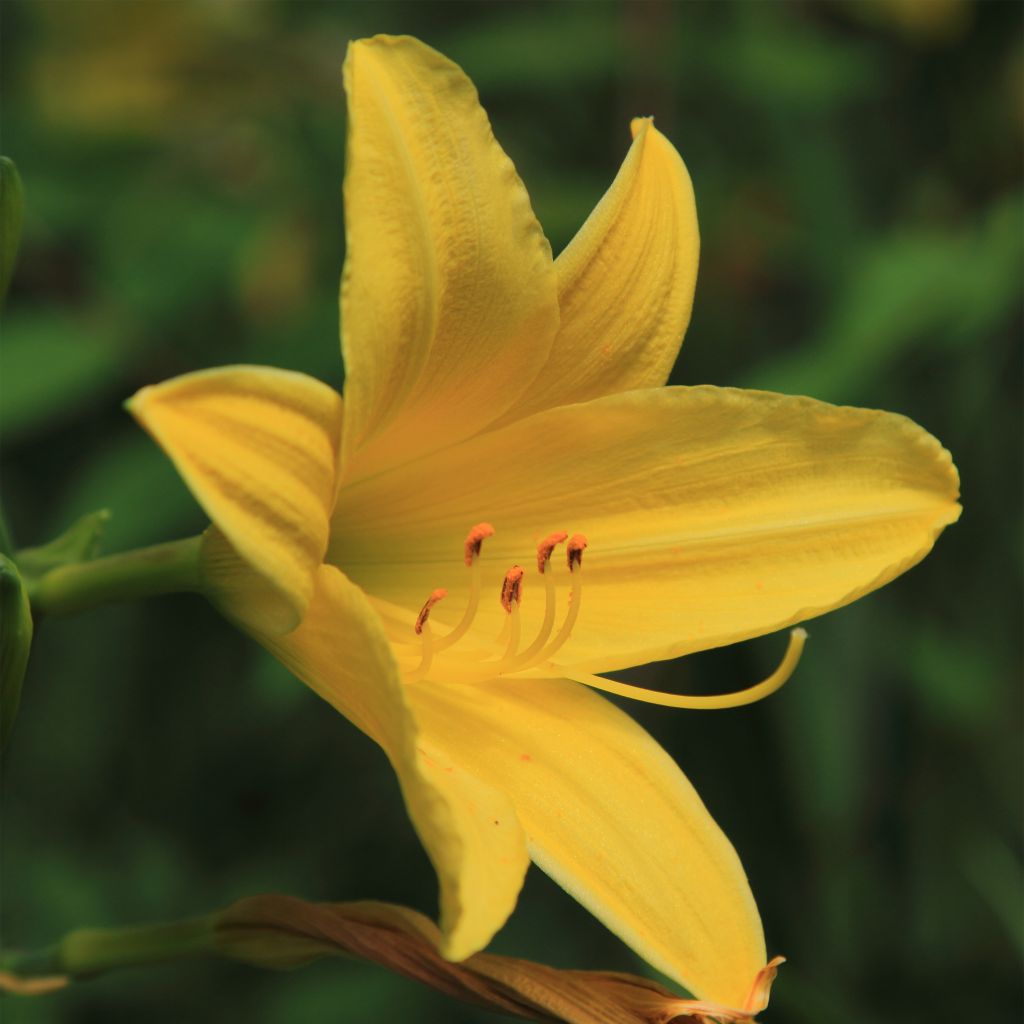

Hemerocallis lilioasphodelus - Daylily
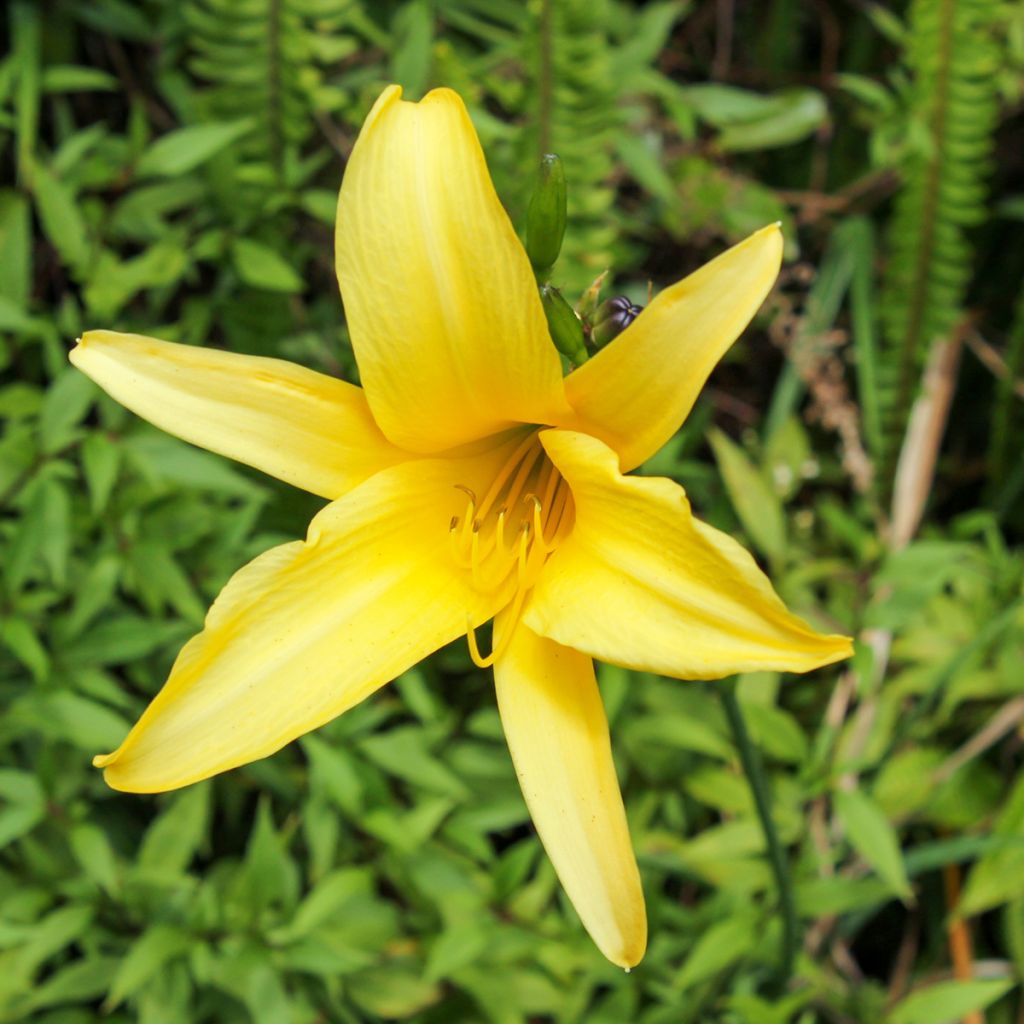

Hemerocallis lilioasphodelus - Daylily
Hemerocallis lilioasphodelus - Daylily
Hemerocallis lilioasphodelus
Yellow Daylily, Lemon Daylily, Lemon Lily
Thanks to the individuals (Élodie for order preparation and Capucine from the shipping department), the Daylily received is healthy. Planted at the base of a Blue Juniper, I am now patiently waiting for the spring growth (or lack thereof)...
Thierry, 15/04/2022
Why not try an alternative variety in stock?
View all →This plant carries a 12 months recovery warranty
More information
We guarantee the quality of our plants for a full growing cycle, and will replace at our expense any plant that fails to recover under normal climatic and planting conditions.
From €5.90 for pickup delivery and €6.90 for home delivery
Express home delivery from €8.90.
Delivery to Corse prohibited: UE law prohibits the import of this plant from mainland France to Corse as part of the fight against Xylella fastidiosa. Please accept our sincere apologies.
More information

Does this plant fit my garden?
Set up your Plantfit profile →
Description
The Hemerocallis lilioasphodelus, also known as Yellow Daylily, is an interesting botanical species for the fragrance of its small lemon yellow flowers, with floral, sweet, and subtly fruity notes, which evoke the scent of orange blossoms or lilies of the valley. This semi-wild plant in our territory produces small flowers that succeed each other along flexible and graceful stems, dominating a beautiful tuft of supple and elegant foliage. It blooms in May-June and again in September. It is an endearing and sturdy perennial, ideal in a cottage garden where it will easily naturalise in not too dry soil.
The Hemerocallis lilioasphodelus (syn. flava) belongs to the Hemerocallidaceae family. It is a perennial plant with spreading rhizomes, native to Central Europe, the Caucasus, and Siberia, first described in 1762. The plant spreads slowly and forms beautiful clumps of narrow and supple leaves, reaching a height of 80 cm (32in) when flowering and a minimum width of 60 cm (24in). The flowering takes place at the end of spring or early summer, during a fairly short period, and sometimes reoccurs in September in moist soil. The small, narrow flowers, pale yellow with brownish backs, measure about 8-9 cm (3-4in) in diameter. They are gathered in a fairly loose cluster of 3 to 9 flowers along a leafless slender stem. The petals in this species are lanceolate, pointed, smooth, without undulations. The flowers open in the evening and last for 1 or 2 days. Its grass-like leaves are 50-60 cm (20-24in) long and 1.2 cm (1in) wide and vibrant green. This plant lives for many years and easily naturalises in the garden.
This daylily will be highlighted in a semi-shaded and backlit exposure. It can be planted in the background of a colourful countryside massif, behind blue blooms (Geranium vivace Brookside, perennial flax, campanulas, wild chicory), alongside Hemerocallis fulva 'Flore Pleno', with its double flowers of flaming orange. It can also be grown in a large pot on the terrace to enjoy its sweet fragrance.
Report an error about the product description
Hemerocallis lilioasphodelus - Daylily in pictures
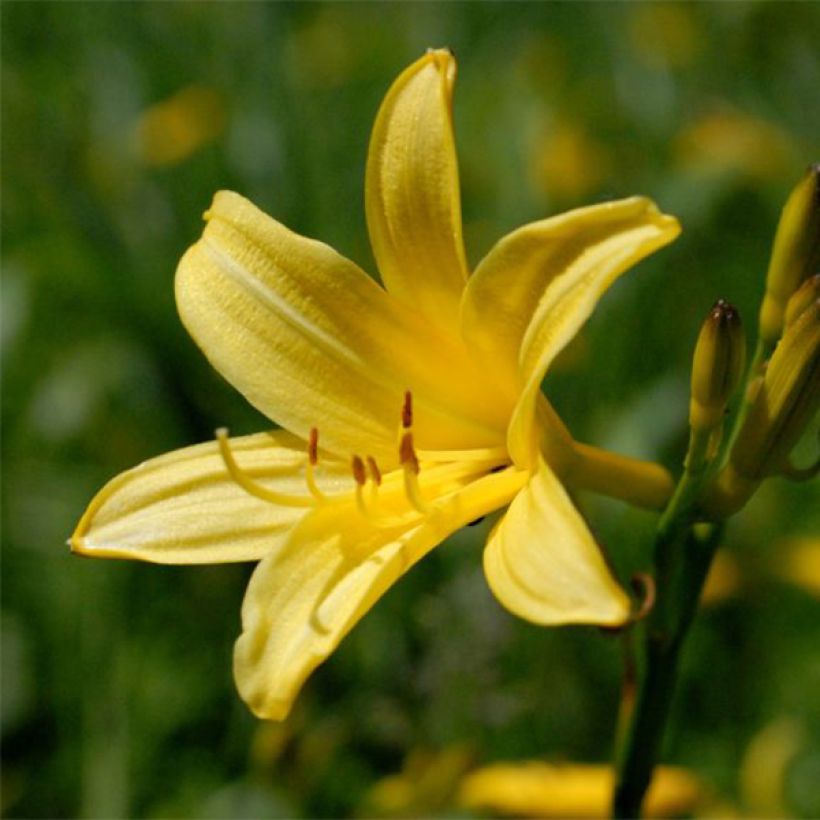

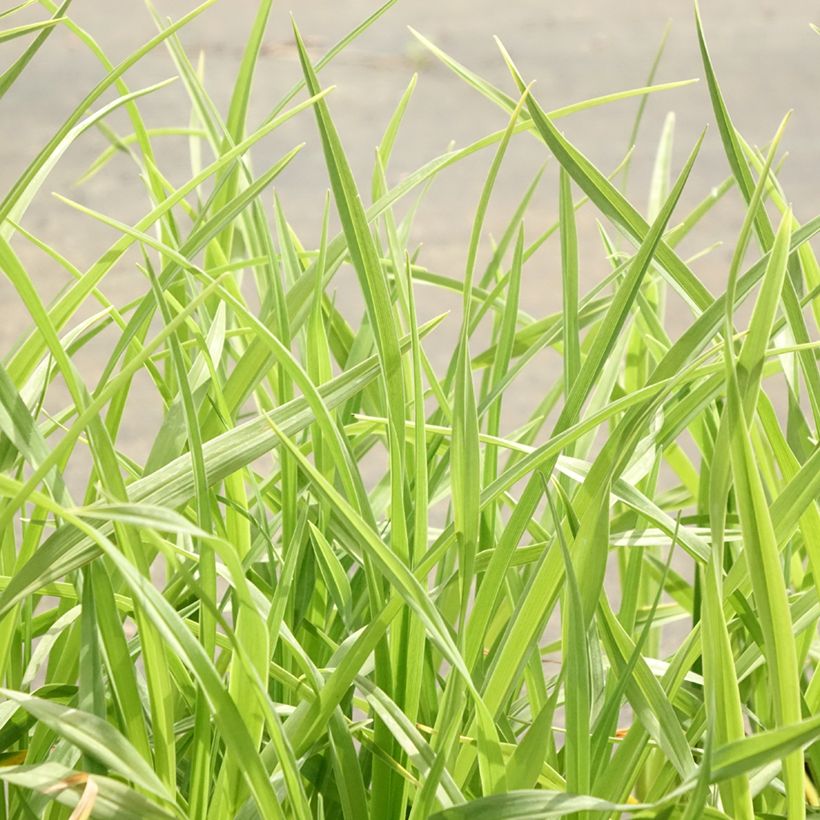

Flowering
Foliage
Plant habit
Botanical data
Hemerocallis
lilioasphodelus
Hemerocallidaceae
Yellow Daylily, Lemon Daylily, Lemon Lily
Caucasus
Other Hemerocallis - Daylilies
Planting and care
If you want to grow the Hemerocallis flava plant, select a location with moist or slightly damp, deep, and well-loosened soil. This plant grows best in full sun or partial shade and can tolerate drier soil or limestone.
When planting young Hemerocallis flava, make sure to space them out with a distance of about 30 cm (12in). Mulch the soil to maintain its freshness and limit the development of unwanted plants. Doing so will also protect the Hemerocallis flava from slugs and snails, which can be harmful.
In warmer climates, it is important to regularly water the Hemerocallis to support its flowering. During winter, clean the foliage to keep it healthy.
Planting period
Intended location
Care
-
, onOrder confirmed
Reply from on Promesse de fleurs
Haven't found what you were looking for?
Hardiness is the lowest winter temperature a plant can endure without suffering serious damage or even dying. However, hardiness is affected by location (a sheltered area, such as a patio), protection (winter cover) and soil type (hardiness is improved by well-drained soil).

Photo Sharing Terms & Conditions
In order to encourage gardeners to interact and share their experiences, Promesse de fleurs offers various media enabling content to be uploaded onto its Site - in particular via the ‘Photo sharing’ module.
The User agrees to refrain from:
- Posting any content that is illegal, prejudicial, insulting, racist, inciteful to hatred, revisionist, contrary to public decency, that infringes on privacy or on the privacy rights of third parties, in particular the publicity rights of persons and goods, intellectual property rights, or the right to privacy.
- Submitting content on behalf of a third party;
- Impersonate the identity of a third party and/or publish any personal information about a third party;
In general, the User undertakes to refrain from any unethical behaviour.
All Content (in particular text, comments, files, images, photos, videos, creative works, etc.), which may be subject to property or intellectual property rights, image or other private rights, shall remain the property of the User, subject to the limited rights granted by the terms of the licence granted by Promesse de fleurs as stated below. Users are at liberty to publish or not to publish such Content on the Site, notably via the ‘Photo Sharing’ facility, and accept that this Content shall be made public and freely accessible, notably on the Internet.
Users further acknowledge, undertake to have ,and guarantee that they hold all necessary rights and permissions to publish such material on the Site, in particular with regard to the legislation in force pertaining to any privacy, property, intellectual property, image, or contractual rights, or rights of any other nature. By publishing such Content on the Site, Users acknowledge accepting full liability as publishers of the Content within the meaning of the law, and grant Promesse de fleurs, free of charge, an inclusive, worldwide licence for the said Content for the entire duration of its publication, including all reproduction, representation, up/downloading, displaying, performing, transmission, and storage rights.
Users also grant permission for their name to be linked to the Content and accept that this link may not always be made available.
By engaging in posting material, Users consent to their Content becoming automatically accessible on the Internet, in particular on other sites and/or blogs and/or web pages of the Promesse de fleurs site, including in particular social pages and the Promesse de fleurs catalogue.
Users may secure the removal of entrusted content free of charge by issuing a simple request via our contact form.
The flowering period indicated on our website applies to countries and regions located in USDA zone 8 (France, the United Kingdom, Ireland, the Netherlands, etc.)
It will vary according to where you live:
- In zones 9 to 10 (Italy, Spain, Greece, etc.), flowering will occur about 2 to 4 weeks earlier.
- In zones 6 to 7 (Germany, Poland, Slovenia, and lower mountainous regions), flowering will be delayed by 2 to 3 weeks.
- In zone 5 (Central Europe, Scandinavia), blooming will be delayed by 3 to 5 weeks.
In temperate climates, pruning of spring-flowering shrubs (forsythia, spireas, etc.) should be done just after flowering.
Pruning of summer-flowering shrubs (Indian Lilac, Perovskia, etc.) can be done in winter or spring.
In cold regions as well as with frost-sensitive plants, avoid pruning too early when severe frosts may still occur.
The planting period indicated on our website applies to countries and regions located in USDA zone 8 (France, United Kingdom, Ireland, Netherlands).
It will vary according to where you live:
- In Mediterranean zones (Marseille, Madrid, Milan, etc.), autumn and winter are the best planting periods.
- In continental zones (Strasbourg, Munich, Vienna, etc.), delay planting by 2 to 3 weeks in spring and bring it forward by 2 to 4 weeks in autumn.
- In mountainous regions (the Alps, Pyrenees, Carpathians, etc.), it is best to plant in late spring (May-June) or late summer (August-September).
The harvesting period indicated on our website applies to countries and regions in USDA zone 8 (France, England, Ireland, the Netherlands).
In colder areas (Scandinavia, Poland, Austria...) fruit and vegetable harvests are likely to be delayed by 3-4 weeks.
In warmer areas (Italy, Spain, Greece, etc.), harvesting will probably take place earlier, depending on weather conditions.
The sowing periods indicated on our website apply to countries and regions within USDA Zone 8 (France, UK, Ireland, Netherlands).
In colder areas (Scandinavia, Poland, Austria...), delay any outdoor sowing by 3-4 weeks, or sow under glass.
In warmer climes (Italy, Spain, Greece, etc.), bring outdoor sowing forward by a few weeks.

































